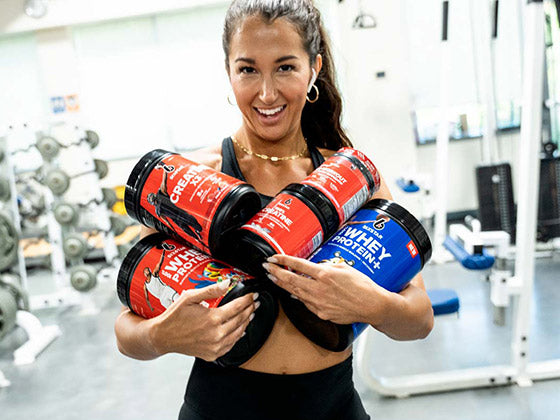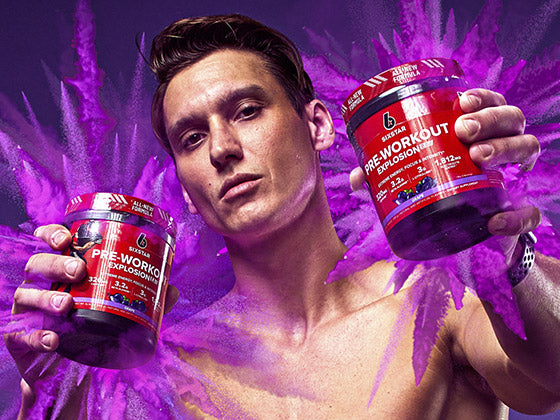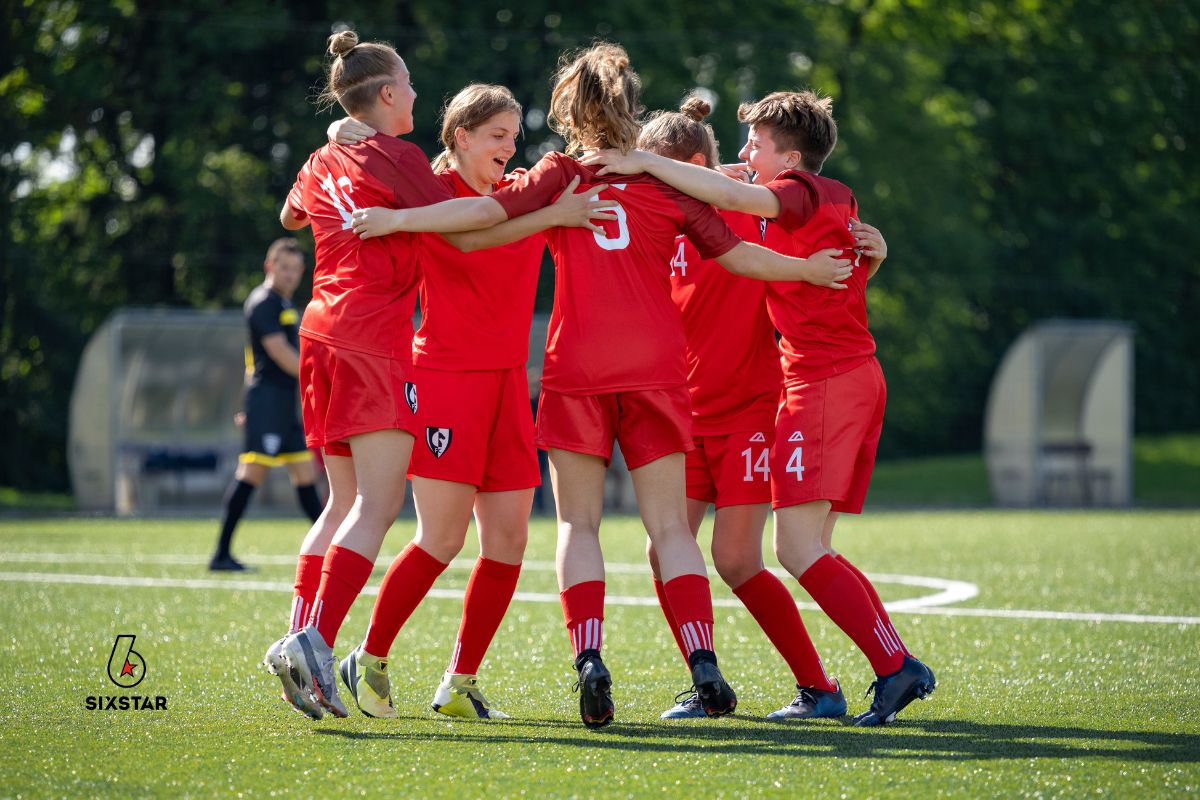Here’s a surprising fact: Just because someone looks jacked doesn’t mean they’re the strongest person in the room. Big muscles don’t always equal big lifts, and vice versa.
That’s because hypertrophy and strength training aren’t the same. Sure, they both build muscle and help you improve, but they focus on different goals, and they shape your training in different ways.
Once you fully understand the difference between hypertrophy and strength training, you can train smarter and set better goals. This can help you avoid lots of frustration. Whether you want to build size or get stronger (or both), knowing how each method works is what you need to get the best results.
Table of contents
In this article, we’ll talk about:
What hypertrophy and strength training really mean
The differences between them
Training tips for each
The role of nutrition and recovery
- And a few supplement ideas to support your goals
What is Hypertrophy Training?
Hypertrophy is all about muscle growth. When we talk about hypertrophy training, we mean working to increase the size of your muscles.
Here’s how it works: Every time you lift weights, you create tiny tears in your muscle fibers. Your body repairs those tears while you’re recovering in between workouts. It makes the muscles bigger and stronger in the process. This is the cycle of muscle breakdown and repair that drives hypertrophy.
Hypertrophy training usually means:
Moderate to heavy weights
Higher rep ranges (8–12 reps per set)
Shorter rest between sets (30 seconds to 90 seconds)
The goal of training for hypertrophy is to build size, shape, and muscle density.
Some popular hypertrophy programs include:
Push-Pull-Legs (PPL) splits
Upper/Lower body splits
Body part splits (like chest day, back day, leg day)
German Volume Training (GVT)
These programs focus on volume. Training for muscle growth means doing enough sets, reps, and work to create that muscle-building stimulus.
What is Strength Training?
Strength training is all about maximal force production. In simple terms, it’s about lifting heavy weights to get stronger.
Unlike hypertrophy, which focuses on muscle size, training for strength is about improving how much weight you can lift. The exercises that individual athletes want to get better and stronger at vary, but most of the time squatting, deadlifting, or bench pressing is involved.
What’s important here are neural adaptations. Strength training improves the way your nervous system fires your muscles. This makes you more efficient at lifting heavy loads. It’s about motor unit recruitment. It teaches your body to use more muscle fibers at once to move a barbell or other weight.
Strength training usually means:
Lifting heavier weights (usually 80–90% of your max)
Lower rep ranges (3–6 reps per set)
Longer rest periods (2–5 minutes)
The main goals is to build power, improve your performance, and increase absolute strength.
Some common strength programs include:
5/3/1 by Jim Wendler
Starting Strength
Texas Method
Powerlifting-focused templates (like squat, bench, and deadlift-focused routines)
Strength training helps you lift heavier, but it’s not always about muscle size. It’s about what you can lift, not how big you look.
Hypertrophy vs Strength: The Main Differences
Here’s a quick look at the main differences:
| Aspect | Hypertrophy | Strength |
| Reps/Set | 8–12 reps |
3–6 reps |
| Sets | 3–5 sets |
4–6 sets |
| Weight | Moderate (65–75% 1RM) |
Heavy (80–90% 1RM) |
| Rest Times | Shorter (30–90 sec) |
Longer (2–5 min) |
| Primary Goal | Build size and shape |
Maximize strength and power |
| Adaptations | Muscle fiber growth |
Neural efficiency (motor units) |
| Frequency | Higher (split training) |
Lower (full-body, compound lifts) |
| Recovery Needs | Moderate (24–48 hrs) |
Longer (48–72 hrs) |
In simple terms: Hypertrophy training is about building bigger muscles. You use moderate weights, more reps, and keep your rest times shorter to create more muscle fatigue. That’s how you grow size and shape.
Strength training is about lifting heavier weights. You use fewer reps, heavier loads, and longer rest to give your nervous system a chance to recover. It’s less about feeling a “pump” and more about moving big weights.
Some athletes combine both methods in a “powerbuilding” style: lifting heavy for strength while also training higher reps to grow muscle. It’s the best of both worlds when done right!
How to Train for Hypertrophy or Strength?
Lorem ipsum dolor sit amet consectetur adipisicing elit. Illum neque eaque, autem sit soluta, voluptatum libero magnam tempore ullam at harum vel, ad reprehenderit, nemo veniam quas in voluptas hic. Lorem ipsum dolor, sit amet consectetur adipisicing elit. Natus id officia omnis suscipit aut architecto repellat a quia eaque reiciendis blanditiis perferendis hic, nihil, mollitia. Iste velit aperiam, numquam dolorem.
We’ve already mentioned some of the characteristics of a good hypertrophy training program, but let’s go into a bit more detail. If you want to focus on hypertrophy (muscle growth), here’s what works best:
Use moderate to heavy weights (65–75% of your 1RM).
Aim for 8–12 reps per set with controlled, steady movement.
Focus on the mind-muscle connection and feel the muscle working on each rep.
Rest for 30–90 seconds between sets to keep the pump going.
For strength training, the approach is a bit different:
Lift heavy (think 80–90% of your 1RM).
Stick to low reps (3–6) with longer rests (2–5 minutes).
Focus on compound lifts like squats, deadlifts, and bench press. These moves recruit multiple muscle groups and help build raw strength.
Fewer sets, but heavier effort.
For both styles, progressive overload is needed. This means gradually increasing the weight, reps, or intensity over time to keep challenging your muscles. In each workout, you should be able to do one more rep or increase the weight. But even improving your form can count toward progressive overload. Without overload, you won’t get stronger or bigger.
(Of course, don’t overdo it to the point of injury. Listen to your body and only increase the weights when you know you’re ready and have proper form.)
Lastly, think about periodization. This means planning your training in phases. You might spend a few weeks building size with hypertrophy work, then switch to strength-focused training. This method keeps your body adapting and helps prevent plateaus.
By cycling between phases, you can build both size and strength over time.
Nutrition and Recovery: The Foundation for Both
Training is only half the battle. Nutrition and recovery are what allow your body to grow stronger and bigger. Without proper fuel and rest, you won’t make the progress you want.
Let’s start with nutrition: To build muscle or strength, your body needs enough calories, protein, and the right mix of nutrients. A good rule of thumb for athletes is to go for about 0.7 to 1.0 grams of protein per lb of body weight per day. This supports muscle repair after tough workouts.
Creatine can also help your body repair your muscles. It’s especially beneficial for strength-focused athletes. It helps replenish ATP (the energy your muscles use for quick, explosive lifts) and may also support recovery and lean mass.
Carbs are important too. They help restore glycogen levels and give your body energy for your next session.
Don’t forget about hydration. Dehydration can hurt both performance and recovery.
Sleep is where the magic happens. Your body repairs and grows during rest. That’s why getting 7–9 hours per night is even more important than one might think.
Active recovery (like light stretching, mobility work, or an easy walk) can also help by keeping blood flowing and reducing stiffness.
Supplements can support your goals, but they’re not a shortcut. Think of them as tools in your toolbox. They work best when combined with smart training, solid nutrition, and proper recovery. Your best gains will come from getting the basics right, every day.
Supplements to Support Hypertrophy and Strength Goals
Once your training and diet are dialed in, supplements can give you an extra edge. Here’s which products can support each goal:
For Hypertrophy:
100% Whey Protein Plus (flavors like Froot Loops, Frosted Flakes, Froot Loops Birthday Cake): A convenient, tasty way to get protein for muscle repair after workouts.
- Creatine X3 Powder/Pills: Helps increase muscle cell hydration, which supports size gains over time.
- Testosterone Booster: Supports natural testosterone production, an important hormone for building muscle mass.
For Strength:
Pre-Workout Explosion 2.0: Provides energy, focus, and pump support to power through heavy lifts.
- Pre-Workout Explosion Ripped 2.0: Great for athletes focused on fat loss and strength gains at the same time.
- N.O. Fury: A stimulant-free pump product that improves blood flow and nutrient delivery to working muscles.
- 100% Creatine: A classic, simple creatine monohydrate supplement for strength gains and explosive power.
These products work best when paired with consistent training, solid nutrition, and smart recovery habits. Think about what you might benefit from and what will support your goals best. Then, use these supplements as part of your overall routine. That’s how you make the most out of each training session.
Common Mistakes in Hypertrophy and Strength Training (And How to Avoid Them)
Even experienced athletes make mistakes that slow down progress. Here are some of the most common ones and how you can avoid them:
For Hypertrophy
One of the biggest mistakes is chasing the pump at all costs. Sure, it feels good, but sloppy form and momentum won’t grow real muscle. The fix is to focus on controlled, full-range reps. Keep the tension on the muscle you’re targeting, not just moving the weight.
Another mistake is neglecting progressive overload. If you’re always lifting the same weight, your body has no reason to grow. Track your lifts and try to add small increments over time. Whether it’s an extra rep, a bit more weight, or a slower tempo, these things will build up over time. With enough consistency, you will see real, tangible progress after a few months or even weeks.
For Strength
Lifting heavy is the name of the game, but going too heavy, too soon is a classic mistake. That’s how injuries happen. To prevent this: prioritize your form over your ego. Strength is built over time. Be patient, and focus on gradual progression.
Another mistake is skipping accessory work. Big lifts like squats and deadlifts are great and necessary, but they’re not the whole picture. Add exercises like rows, lunges, and core work to build a balanced, bulletproof body.
For Both
Across the board, a major mistake is underestimating recovery. You grow when you recover, not just when you train.
That means getting enough sleep, staying hydrated, and fueling your body properly. This can be easy to overlook. But if you’re size or strength gains are stalling while your giving it 100% in the gym, your other lifestyle choices might be the reason why.
Supplements like SixStar Creatine X3 and 100% Whey Protein Plus can help support your recovery when you’re pushing hard in the gym.
Bottom line: avoid these common mistakes, stay consistent, and you’ll stay on the fast track toward your goals…no matter if you’re chasing size, strength, or both.
Find Your Goal, Train Smart
When it comes to hypertrophy vs strength, it’s not about picking one forever. You don’t have to necessarily pick one at all. It’s about knowing your current goal and training with purpose. Hypertrophy training builds size, strength training builds power, and both have value.
The best athletes learn to cycle between the two. Want bigger muscles? Spend some time in a hypertrophy phase. Want to lift heavier? Shift to strength-focused training. Over time, a balanced approach like this can help you build a physique that’s not just big…but strong, too.
Or make sure to include both types of exercises (strength-building ones and size-building ones) in your workouts. That way, you can maximize both: looks and raw power.
Now that you know all about the differences between hypertrophy vs strength, take a step back, look at your goals, and build a plan that gets you there.




